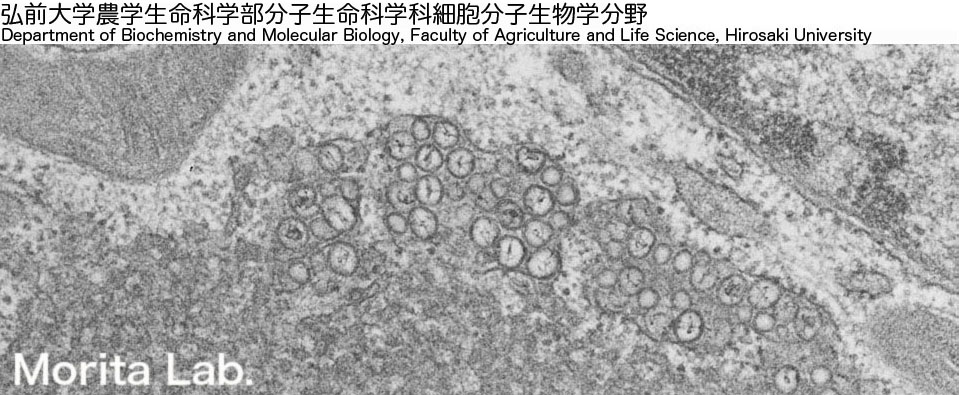Japanese/English |Lab Member|Publications|Contact|

Positive-strand RNA viruses can dramatically rearrange the intracellular membranes of the host cell and produce unusual organelle-like structures called “replication complexes” or “membranous webs”. These membrane structures appear in close proximity to the endoplasmic reticulum and likely serve as a scaffold for the assembly of replication machinery by providing an organization and environment facilitating viral propagation. These structures also serve as shells that protect the viruses against various cellular stress responses and allow persistent viral replication in the cytoplasm.
Our group has focused on the molecular mechanisms involved in the formation of these replication complexes to determine the dynamic state of viral and/or host factors during the viral propagation cycle. Recently, we successfully purified replication complexes from cells infected with hepatitis C virus or flavivirus, and performed quantitative mass spectrometry analyses. In these studies, we identified several cellular factors that were specifically recruited to viral replication complexes. We are currently focusing on the molecular functions of these newly identified cellular factors on the presumption that they are involved in the biosynthesis of the viral replication complexes. We are also studying the molecular mechanisms of viral particle formation and the mechanisms of autophagy induction seen in virus-infected cells. These studies may contribute to the development of novel antiviral therapies.
What’s new/2014.9.24 update
| 2022.12.1 | Moved to HIRO-DAI- home |
| 2014.9.24 | Hirosaki University site open |
| 2014.9.1 | Moved to Hirosaki University |
| 2012.10.1 | English site open |
| 2012.1.7 | Lab website open |
| 2011.12.16 | Morita lab open |


